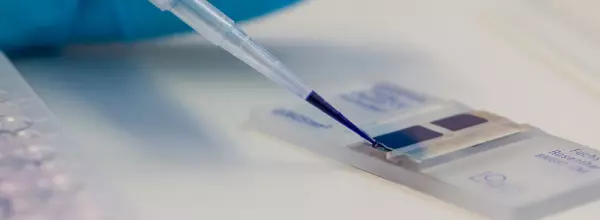
Biological Safety Testing of Medical Devices
Biological Evaluation of Medical Devices / Biocompatibility TPMD provides a highly sophisticated...
Portal and digital medical technology fair of the largest MedTech cluster in Germany

Biological Safety Testing of Medical Devices
Biological Evaluation of Medical Devices / Biocompatibility TPMD provides a highly sophisticated...

The blood coagulation measuring reagent contains a matrix of calcium, tissue thromboplastin, and cobalt ions. The matrix includes factors I, II, and V, which help in the conversion of prothrombin into thrombin. These substances are responsible for forming clots. The reagent is designed to measure the time it takes for blood to clot. The reagent can be used to detect bleeding or monitor bleeding in humans.
The APTT test requires a long time for a positive clot to form, and a long channel length is required to maintain the flow for the length of time necessary. This may be beneficial in some cases, but it is not ideal for most tests. In any event, blood coagulation measuring methods can be improved significantly. Despite the limitations of existing technology, the advantages of the invention are clear. This article will discuss the advantages and disadvantages of using portable coagulation meters.
The method of the present invention is a disposable coagulation measuring reagent, and a reagent for the aforementioned method. The device is designed to detect coagulation factors in biological samples, and it also includes a disposable test strip. The resulting coagulation assay is displayed on a display of the hand-held meter. This reagent is ideal for home or point-of-care testing.
A blood coagulation measuring reagent comprises calcium and phospholipid. A nonionic surfactant is added to the reagent to improve its stability. The reagent also has a sensitivity for detecting low levels of thrombin or a rapid clotting reaction. As a result, this blood coagulation testing reagent is ideal for assessing the quality of blood in the clinic.
In the laboratory, blood clotting measuring is essential to preventing excessive blood loss. The blood clotting system is responsible for stopping active bleeding and plugging leaking vessels. But the clotting function is dynamic, and the blood clots are constantly breaking down and dissolving. Therefore, the method of coagulation is crucial for the survival of a patient. The resulting clots are crucial to the functioning of the body.
The clotting factors in the blood are categorized according to their proportion. A normal blood clotting factor concentration is above 100 mmol/L. If a patient has a higher or lower percentage of one of these factors, he or she is said to have a high blood coagulation rate. The higher the clotting rate, the more serious the condition is. Fortunately, the process of measuring blood coagulation in the blood is simple and accurate. It is the best method of monitoring a patient's blood clotting activity.
The aPTT test is one of several blood coagulation tests. It measures the time taken for a clot to form. It is important for the blood to clot in a specific pathway, so the test measures the length of time it takes to clot. Taking the aPTT test is an important way to monitor your blood coagulation. The aPTT test is usually used with other tests that measure clotting factors.
PT and APTT measurements can be used to monitor a patient's blood coagulation. During a PT test, a sample flows between electrode tips and a stirring device. This test is useful for monitoring blood clotting in a patient and is inexpensive. A PT test has no side effects. The APTT test is used to measure the clotting time of a standard plasma.
A PT and APTT reagents can be combined. PT is a commonly used method of assessing platelets and APTT is a more precise method for determining the total time it takes for a blood clot to form. The APTT measuring reagents have a range of applications, and are ideal for routine testing. Unlike PT and APTT, the APTT is highly stable and can be stored for a long time without loss of performance.
Thrombocytes are the cells that slow the bleeding process. These cells are called platelets and thrombocytes. They adhere to the walls of the blood vessels and to each other, forming a palette plug. This is important because it ensures primary hemostasis. However, some people may have problems with clotting. These conditions include vitamin deficiencies, leukaemia, and liver disorders.
Become a digital exhibitor yourself in the online portal of the largest and best-known MedTech cluster region in Germany and inform the world of medical technology about your products and services as well as about news, events and career opportunities.
With an attractive online profile, we will help you to present yourself professionally on our portal as well as on Google and on social media.